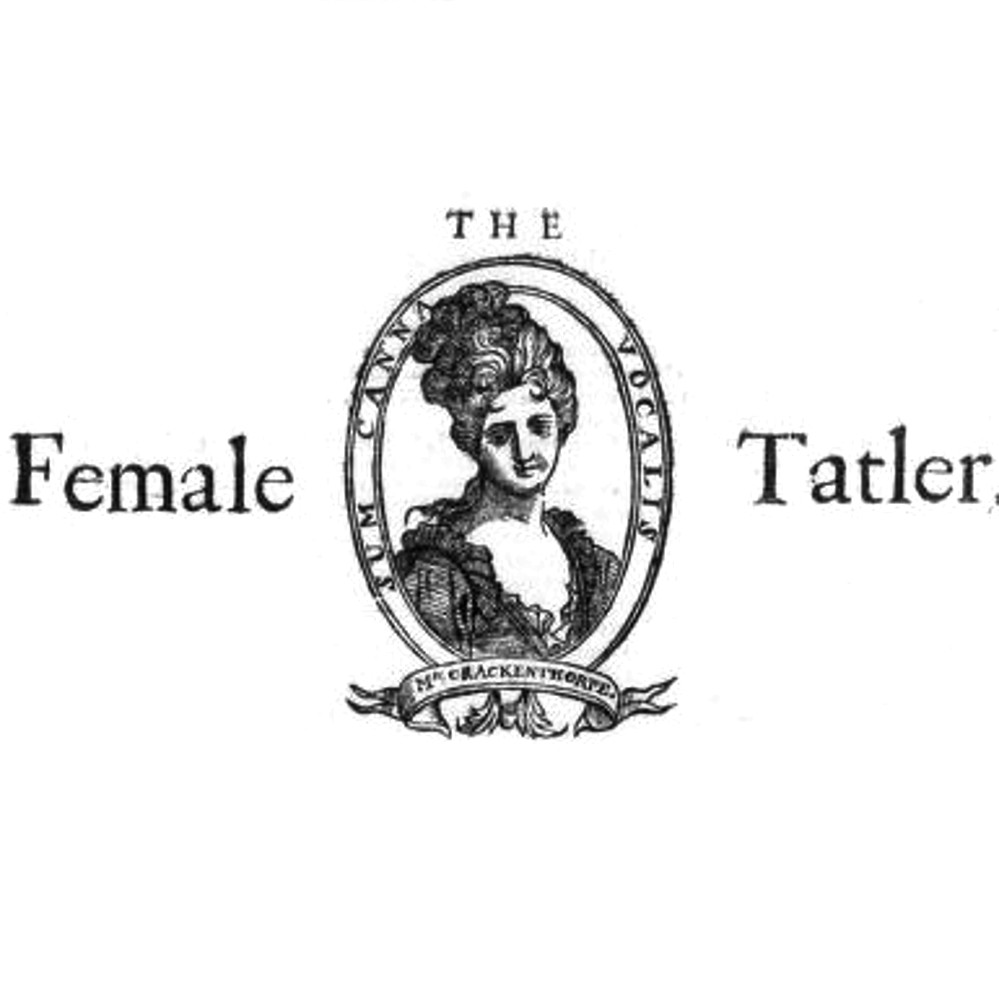It purported to be written by a Mrs Crackenthorpe, ‘the woman who knows all’, for the first 51 editions before being transferred to ‘a society of ladies’ who took it over for the following 58. Interestingly, the original Mrs Crackenthorpe seemed to have had an argument with B Bragg, the original publisher and moved to A Baldwin. Bragg tried to run their own rival Female Tatler which ran for a short while. The copy I had, published by Everyman and edited by Fidelis Morgan has all of these variations of the magazine and a selection of the kinds of adverts the magazines ran.
The magazine came out thrice-weekly, on the days The Tatler didn’t, and purposely established itself as a supplement to the other magazine. In general it features a longer piece that reminded me of a stand-up’s eight minute set, and a couple of one-liner, little jokes after. Often these longer pieces had references to known people under jokey names like ‘Arabella Ticklepulse’ or ‘Mrs Manlove’ with enough contextual details for someone with a little social information to determine the subject of the piece. London may have been one of the larger cities in the world but it was a small place compared to today.
There’s a little characterisation of Mrs Crackenthorpe, of her friends and relations and particularly her footman Francis. He’s set up as a pampered, feminine figure who is doted on by her employer. I’d have liked more Francis, he was fun. The paper doesn’t build up a society or range of characters the way The Spectator does but Mrs Crackenthorpe does have some character for as long as she presides over the magazine.
Fun gags included a laughing master, hired to instruct women in how to make their laughter more musical; dances masters for dogs, a woman advertising for a dashing highwayman to rob her and a book on the ‘Art of Lisping Agreeably’. There was a very odd little part about the prevalence of the surname Smith and some pokes at Colley Cibber’s less successful plays. Possibly my favourite of the Crackenthorpe entries was about the public dissection of a hanged man which focussed primarily on the reactions of the assorted curious Londoners who went to see it, particularly butchers, who scoffed that they could slit open many more carcasses in the time it took the surgeon to cut open one. I also liked the conclusions of the surgeon who said that the hanged man had probably died of suffocation and may have been in a state of fear when he did it.
Aside from this, the general subject of humour was the fluidity of class, particularly between the gentry and the richer London citizens where the cits tried to ape the gentry and the gentry tried to impress the moneyed cits. Interspersed with this were call-outs which were obviously hints at genuine scandals. As the months went on, these call-outs became more stridently vicious and the longer, general pieces more haranguing until it began to get quite tiresome.
At this point The Female Tatler changes to being run by a ‘society of ladies’ who take a day each. At first, I was glad that the oppressive attitude of the Crackenthorpe articles but it became clear that the society’s papers were duller and more generic. Rather than the pointed names and specific details, the characters have generic ‘georgic’ names and the articles read more like typical romantic stories. A few of the articles stand-out, tI particularly liked one about why women have been written out of history but in general, I began to miss Mrs Crackenthorpe.
Included in my copy were the 25 editions of The Female Tatler written for the original publisher when Mrs Crackenthorpe moved to another publisher. Although they were the cheap knock-off, I have to say I preferred the ‘false’ Tatlers. They developed the character of Mrs Crackenthorpe and Francis more fully than the originals, they had more fun trying to pick fights with the original Crackenthorpe and claimed she was an impostor. I also found the articles to be clearer with more action, more insults and more direct speech in general. There is also a mention of a cucumber, which is something I look out for.
The last part of the book contains examples of adverts that were included and it’s a bit like US TV, they’re all for quack medical stuff.
In general, I found The Female Tatler to be a difficult book to read, three-hundred year old chatty-gossipy writing is harder to read then literary language of a similar age but it was worth it to see what people did gossip about and the language they used to do it. What was the joke about the colour cherry red though?



I think the lady tatler is back in 20's
ReplyDelete